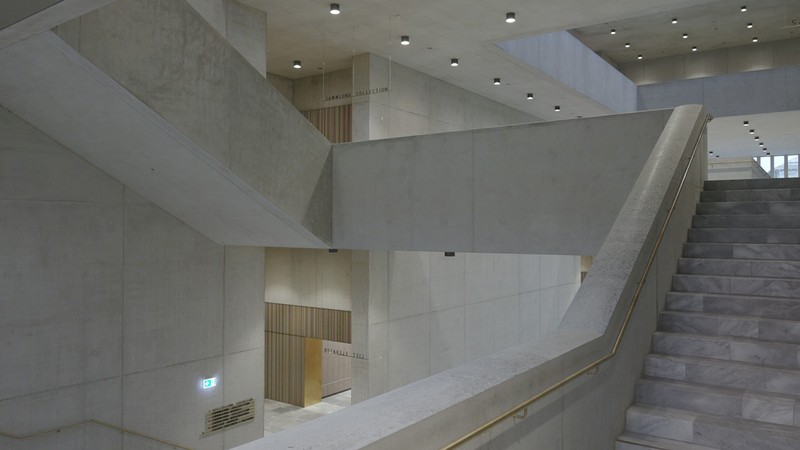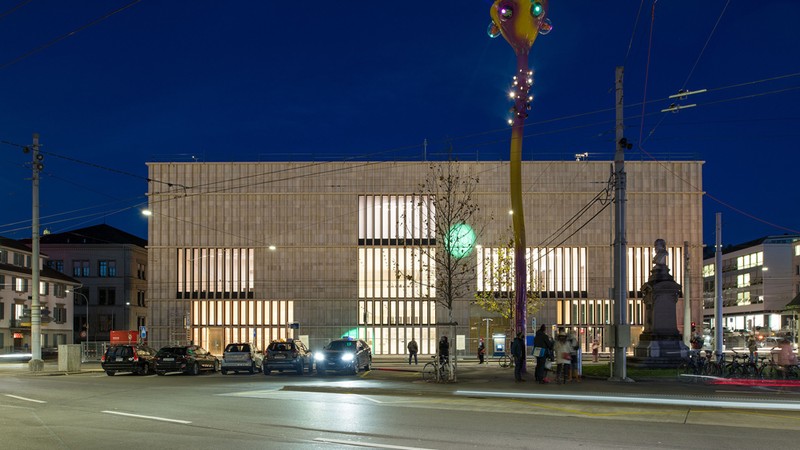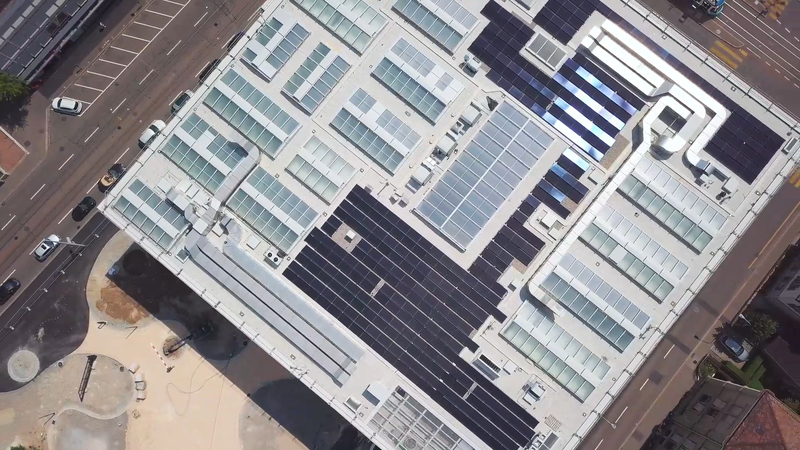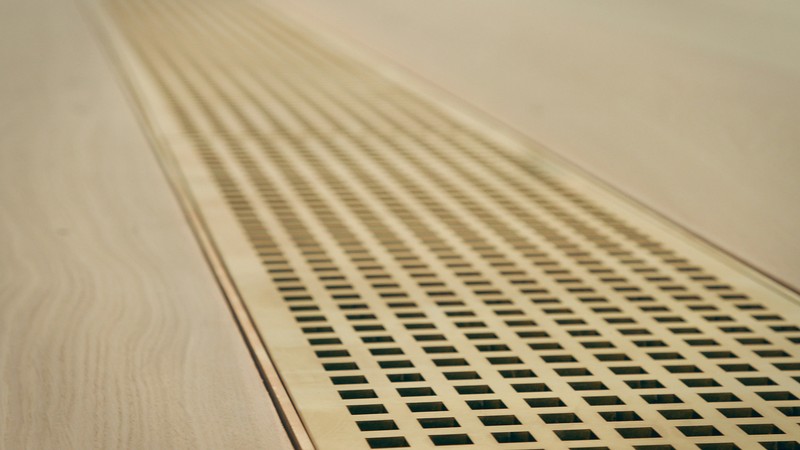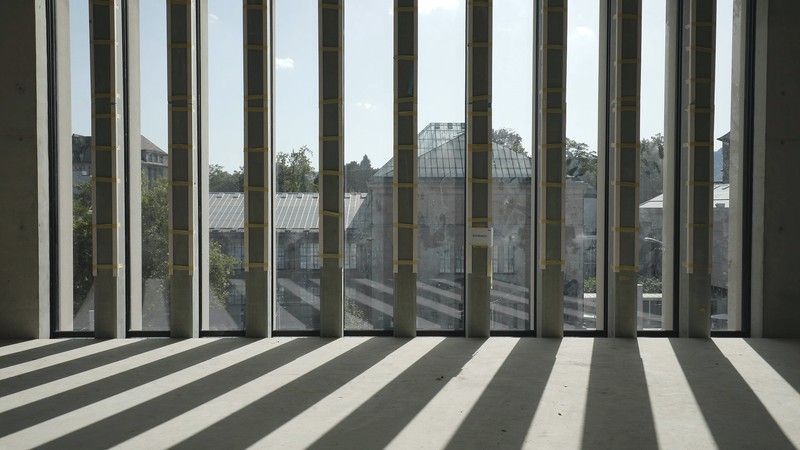Countdown journal

From abstract expressionism to expressive awakening
With selected works of the collection from 1945 onwards, the expressive aura of modernism has reached the extension building. In an exciting arrangement, the contrasts between abstract expressionism (Newman, Pollock, Rothko, Sekula) and pop art (Warhol, Wool) are being visualised. The spectacular paintings and rare original sculptures by Cy Twombly also form a focal point of this phase in a separate exhibition area. The post-modern spectrum is represented above all by the works of the expressive awakening from 1980 onwards (Baselitz, Genzken, Polke) and a special accent is set by 'Eight Student Nurses', a newly added major work by Gerhard Richter from 1966.

Both a warning and a reminder of the fragile present
The extension now also offers prominent space for contemporary art. Maximum associative works such as those by the South African Lungiswa Gqunta or the Mexican Teresa Margolles focus on existential themes of humanity such as social injustice, expulsion and exclusion. Gqunta's bottle installation 'Lawn' (2017), for example, symbolises the fragility of the South African present in the context of racism and violence. And Margolles's radical works'Pesquisas' (2016) or 'Máscara de Barbara Coudenhove-Kalergi sumergida en cemento' (2015) literally placard and cement the disregard for women's and human rights.
Behind the scenes @kunsthauszuerich

The first artworks in the lobby, bar and garden
A number of works have spent months undergoing restoration to prepare them for presentation in their new permanent home. Alexander Calder’s mobile ‘Cinq blancs, un rouge’ (1972) in the lobby feels almost close enough to reach out and touch. Max Ernst’s mural ‘Pétales et jardin de la nymphe Ancholie’, which was painted in 1934 for the Corso Bar at Bellevue, is now the artistic centrepiece of the Chipperfield Bar. Robert Delauney’s ‘Formes cirulaires’ (1930) draws the eye towards the second floor, while ‘Grundstein’ (2014), donated by Urs Fischer, lies casually between the spaces.
In the latest episode 'Art and Space' of the extension film series, our curators report on the context of the selected permanent collection works.
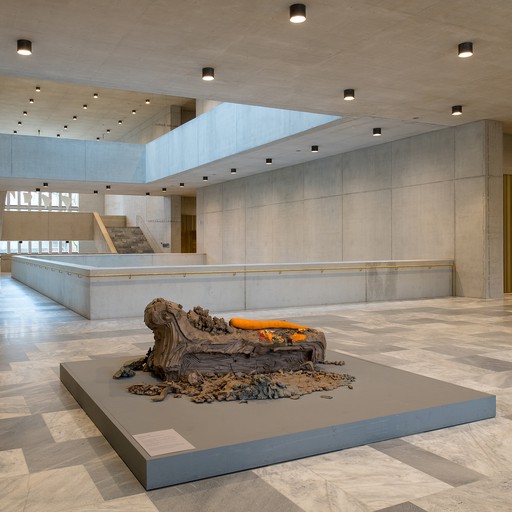
The Kunsthaus Collection in the new extension
Half of the rooms in the existing building have been reorganized. Now Munch meets Baselitz, while the Egyptian artist Anna Boghiguian shares the domed room (previously formerly home to Böcklin) with Kader Attia. Between now and the opening, the Collection, most of it post-1960, will move into the extension. Dada gains its own exhibition space, as does Cy Twombly, while Hodler and Segantini as well as Monet’s water lilies will be heading across Heimplatz. Many more will follow to complement the private collections.

Private collections: Bührle, Merzbacher and Looser
The collection of Emil Bührle, with its world-famous French paintings, is moving into the Kunsthaus. The artistic concept envisages displaying the more than 180 paintings and sculptures alongside works of Classical Modernism, thereby presenting visitors with an unbroken chronological sequence of artistic epochs. Werner Merzbacher shares his passion for art with the public in a feast of colour, the fruit of a long-term cooperation featuring key figures of Impressionism, the ‘Fauves’, ‘Brücke’ and ‘Blauer Reiter’, Futurists and Constructivists as well as more recent positions from Lohse to Rist. Last but not least, 70 selected works of Minimal Art, Arte Povera and Abstract Expressionism from the Looser Collection are a spectacular addition to the Kunsthaus’s holdings.
Your #KunsthausExtension


